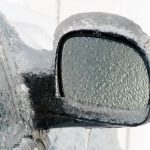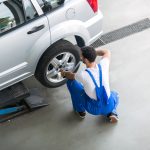How to Drive Safely in the Snow
As many Ontario drivers know, winter driving can be treacherous. From below-freezing temperatures to snow, ice and whiteout conditions, there are lots of factors that can contribute to unsafe driving. While it’s best to stay off the roads when it’s snowing this winter, sometimes that’s not possible, so here are some tips for safe driving in the snow.
Know Before You Go
The key to driving safely in the snow is to be prepared. Before you leave home to drive in the snow, prepare yourself not just for the driving, but in case anything goes wrong as well. Always plan your route and check the road conditions before you leave. Sticking to major roads and highways can help you avoid poor conditions, as these roads are usually kept clear and salted first after a big storm.
It’s also a great idea to keep your car packed with emergency supplies in case you get stuck in the snow. Find out what you should include in your emergency roadside kit.
Before you head out, run through this checklist as well:
- Make sure you have a full tank of fuel
- Check your tires for wear
- Top up your oil and windshield washer fluid
- Know how to use your heater to clear your windshield from mist
- Clear your whole windshield of snow and ice, as well as rearview mirrors
Keep a Safe Distance
Snow is slippery and harder for your tires to get traction on, so keeping a safe distance between your car and the car ahead of you is essential. This will give you plenty of time to slow down or react to sudden movements from other drivers. A good rule of thumb is to stay about 20 seconds behind the car in front of you when the roads are snowy or icy.
Adjust Your Driving to the Conditions
Driving in the snow is vastly different than driving on pavement, so it requires some slightly different driving techniques as well. When you’re using any of your controls (steering, throttle and brakes), always try to use them smoothly and slowly. Sudden or abrupt changes could cause your car’s tires to lose the grip they have on the road.
Be Prepared for Skidding
Sometimes, no matter how careful you are, it’s hard to avoid skidding on slippery and snowy roads. But skidding doesn’t have to result in an accident. If you feel your car start to skid, take your foot off the accelerator and let your car slow by itself. Using your brakes will make the skidding worse, and if you start to veer off, turn your steering wheel in the direction your car is going to regain control.
For more tips for driving safely this winter, check out this checklist from Logel’s Auto Parts in Kitchener!







